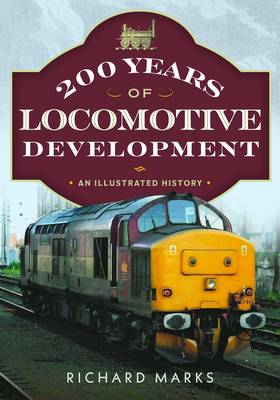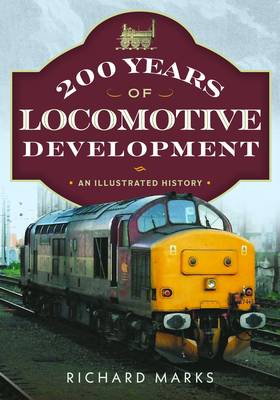
- Afhalen na 1 uur in een winkel met voorraad
- Gratis thuislevering in België vanaf € 30
- Ruim aanbod met 7 miljoen producten
- Afhalen na 1 uur in een winkel met voorraad
- Gratis thuislevering in België vanaf € 30
- Ruim aanbod met 7 miljoen producten
Zoeken
€ 20,95
+ 41 punten
Omschrijving
Since Richard Trevithick's first forays into the development of the steam locomotive, Britain's engineers have been at the forefront of railway technology. Often innovative, and sometimes unfairly maligned, the country's locomotive engineers continually broke new barriers in traction technology although not everything was successful. From the earliest simple steam locomotives to the latest diesel and electric engines, Britain had led the way in railway locomotion, although competition from European, Japanese and American manufacturers sometimes exceeded what British engineers had achieved.
In this new book, industrial and railway historian Dr Richard Marks provides fresh insights into Britain's role in railway locomotive design and technology, and examines the highlights of British developments from Trevithick's Coalbrookdale locomotive to the Brush Class 60 diesel locomotive. Based upon new research this useful primer aims to start the reader on a journey of discovery, unravelling some of the myths which have arisen around Britain's railway history and explaining in an easy to follow narrative why some potentially advantageous developments failed to live up to expectations.
In this new survey of 200 years of British locomotive history to accompany the Railway 200 celebrations, the reader is presented with a compelling and easy to read introduction to a complex, but intriguing subject.
In this new book, industrial and railway historian Dr Richard Marks provides fresh insights into Britain's role in railway locomotive design and technology, and examines the highlights of British developments from Trevithick's Coalbrookdale locomotive to the Brush Class 60 diesel locomotive. Based upon new research this useful primer aims to start the reader on a journey of discovery, unravelling some of the myths which have arisen around Britain's railway history and explaining in an easy to follow narrative why some potentially advantageous developments failed to live up to expectations.
In this new survey of 200 years of British locomotive history to accompany the Railway 200 celebrations, the reader is presented with a compelling and easy to read introduction to a complex, but intriguing subject.
Specificaties
Betrokkenen
- Auteur(s):
- Uitgeverij:
Inhoud
- Aantal bladzijden:
- 144
- Taal:
- Engels
Eigenschappen
- Productcode (EAN):
- 9781036136697
- Verschijningsdatum:
- 28/04/2026
- Uitvoering:
- Paperback
- Formaat:
- Trade paperback (VS)
- Afmetingen:
- 171 mm x 248 mm

Alleen bij Standaard Boekhandel
+ 41 punten op je klantenkaart van Standaard Boekhandel
Beoordelingen
We publiceren alleen reviews die voldoen aan de voorwaarden voor reviews. Bekijk onze voorwaarden voor reviews.








